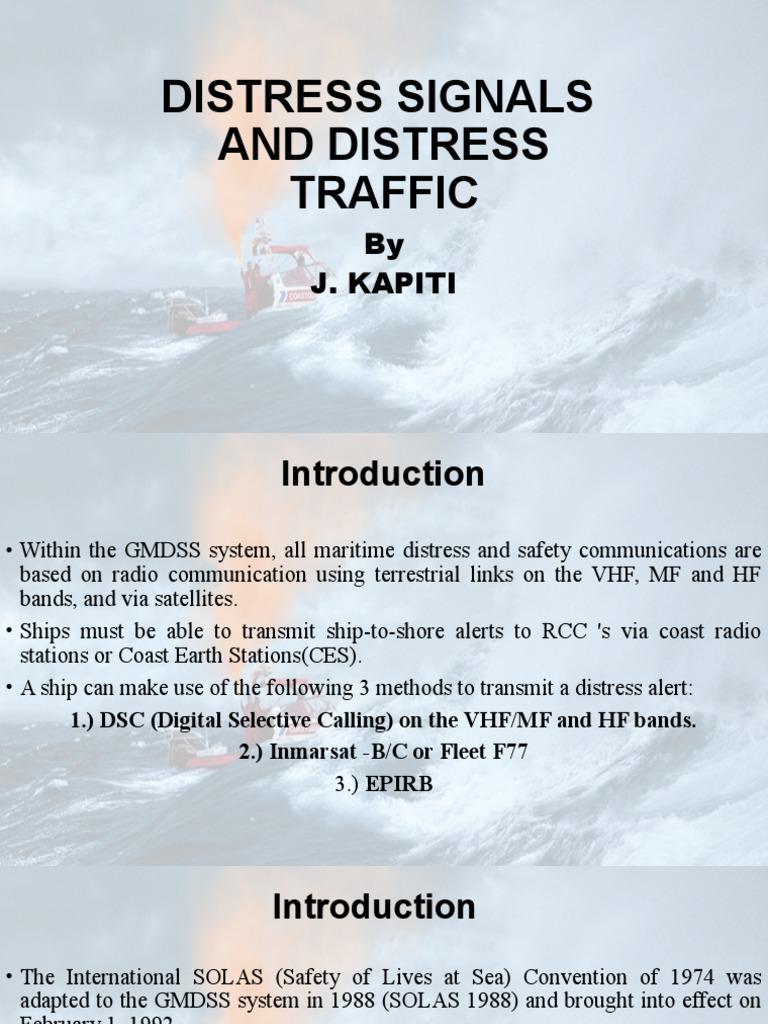In times of peril, effective communication is paramount, especially when it involves signaling distress. The international emergency signal for distress serves as a universal language, transcending borders and ensuring that help is rendered in a timely manner. This article delves into the various aspects of distress signals, examining their history, forms, and application, to equip readers with a comprehensive understanding of these crucial navigational tools.
The Historical Context of Distress Signals
The roots of distress signaling can be traced back centuries, when mariners relied on visual aids, such as flags and fire signals, to convey urgency amid tempestuous seas. The advent of radio communication catalyzed a revolution in this realm, allowing for more precise and swift transmissions. The International Telecommunication Union (ITU) formalized universal signals through the Global Maritime Distress and Safety System (GMDSS), creating a cohesive framework for maritime communication.
Types of Distress Signals
There exists an array of distress signals recognized internationally, each tailored to specific circumstances and mediums of communication. Below, we explore the predominant forms:
1. Visual Signals
Visual distress signals include flags, pyrotechnics, and other conspicuous markers. The “SOS” signal, characterized by three dots, three dashes, and three dots (··· — ···) in Morse code, remains the hallmark of maritime distress. Additionally, the use of a bright orange flag or a square flag with a black circle can indicate emergencies. These visual markers can be easily discerned from a distance, providing an effective means of signaling for rescue.
2. Acoustic Signals
Sound signals play a crucial role in communicating distress, particularly in conditions where visual cues may be obscured. Prolonged blasts of a ship’s horn or whistle, typically in intervals of one minute, serve as unequivocal distress signals. Alarm bells, sirens, or any other loud noise can also signify an emergency situation. The auditory component is essential as it transcends visual limitations, reaching those within earshot.
3. Electronic Signals
The advent of modern technology has revolutionized distress signaling through electronic means. The Emergency Position-Indicating Radio Beacon (EPIRB) is a key tool, emitting a distress signal that is monitored by satellites, alerting the nearest rescue coordination center. Similarly, the Digital Selective Calling (DSC) feature employed in VHF radios allows vessels to send an automated distress signal with their exact location, dramatically enhancing the efficacy of search and rescue operations.
4. Signal Mirrors and Flares
Signal mirrors and flares are integral components of emergency kits for both maritime and terrestrial excursions. The reflective surface of a signal mirror can create a beam visible from miles away, harnessing sunlight to signal potential rescuers. Flares, on the other hand, release bright light and smoke, significantly enhancing visibility during nighttime or inclement weather conditions. Their bright colors and inherent brilliance are indispensable when attempting to attract attention.
5. Whistle Signals
A simple yet effective tool, whistles can serve as an excellent distress signal, especially when accompanied by a series of short and long blasts. Three short blasts followed by three long blasts signal the need for urgent assistance. It is an easily portable device that proves invaluable in outdoor pursuits, ensuring that one can emit a distress call even when voice shouting may fail.
Regulatory Framework
International regulations underscore the importance of utilizing proper distress signals. According to the International Convention on the Safety of Life at Sea (SOLAS), all vessels should be equipped with recognized distress signaling devices. These regulations ensure that mariners are prepared for emergencies, promoting safety across international waters.
Challenges and Considerations
Despite the established mechanisms for distress signaling, challenges persist. The effectiveness of signals can be compromised by environmental factors such as fog, storms, and heavy winds. Moreover, the understanding of distress signals can vary among different cultures, underscoring the importance of universal education on these practices. Experts recommend regular training and drills for sailors and outdoor enthusiasts to ensure that all participants are familiar with the appropriate signals, enhancing overall readiness.
Modern Advancements and Future Trends
As communication technologies advance, the landscape of distress signaling continues to evolve. Innovations such as smartphone apps and satellite communication systems have broadened the scope of available distress signals. Newer technologies allow individuals to send out distress alerts with precise GPS coordinates, facilitating more efficient rescue operations. The integration of Artificial Intelligence into navigation and distress signaling systems heralds the possibility of more automated responses to emergencies, amplifying safety measures across all realms of travel.
Conclusion
In conclusion, the international emergency signal for distress encompasses a variety of forms that play a vital role in ensuring the safety of individuals in perilous situations. Understanding and recognizing these signals is imperative, given the unpredictability of emergencies. By equipping oneself with the knowledge of various distress signals—ranging from visual and acoustic to electronic—individuals can effectively communicate their need for help, thereby safeguarding lives in critical circumstances. Whether on land or at sea, the power of a simple signal can make all the difference in times of distress.
